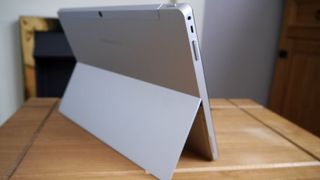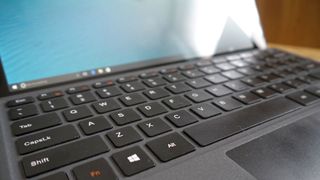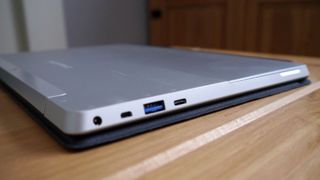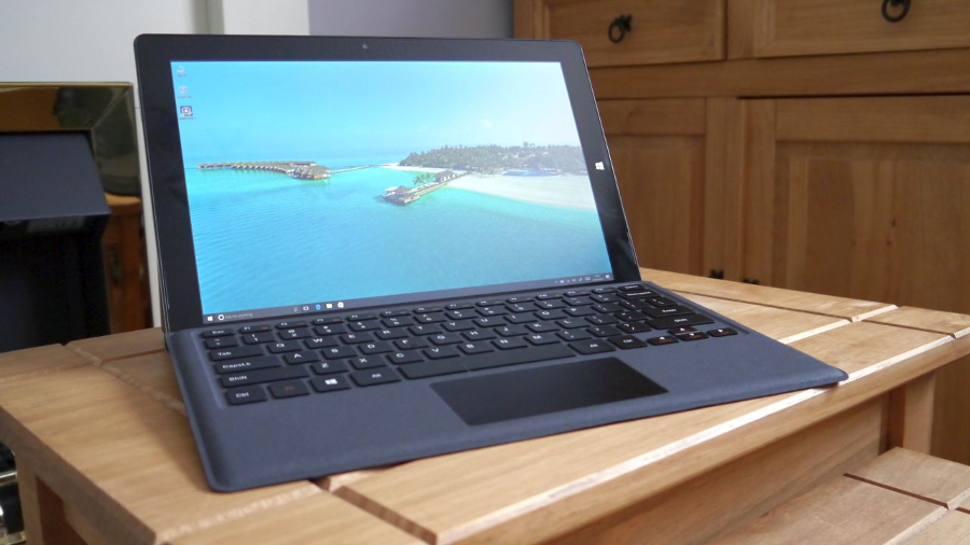TechRadar Verdict
The X5 Pro is, on paper, a fantastic product pitched at a hard-to-believe price. However, a great device is more than the sum of its parts, and this 2-in-1 sadly lacks some of the finesse you get with the big-hitting Tier-1 manufacturers.
Pros
- +
Great value for money
- +
Top-notch performance
- +
Superb screen
Cons
- -
Touchpad should be better
- -
Aftersales likely to be an issue
Why you can trust TechRadar
It was only a matter of time before Chinese vendors decided to go upstream towards more lucrative market segments where profit margins are higher.
What started as a flood of cheap knockoffs has gradually transformed into a steady stream of better quality products that tend to get their inspiration from Microsoft instead of Google or Apple.
Chinese vendors are now bolder and they no longer hesitate to take on the big names with expensive, high-end products. The Xiaomi Air 12 is one of many devices that have attempted to carve a niche at the top-end of the market with mixed results.
But that won’t prevent others, like Teclast, trying something. This little-known manufacturer impressed us earlier this year with the Tbook 16 Power which took on the Surface 3, delivering a convincing performance at a fraction of the price of its rival.

But the Tbook 16 Power is not the top of the range model from the company – that badge of honour belongs to the X5 Pro, a Kaby Lake-toting tablet that goes head-to-head with another Microsoft device, the Surface Pro 4.
However, at £474 (around $585, AU$760) at the time of writing at Gearbest, this 2-in-1 is not cheap, and the price tag may give you pause for thought (that said, we’ve seen it available for as low as £380 – around $470, AU$605 – during one of the retailer’s numerous flash sales).
These costs are exclusive of any taxes that may be levied by HMRC or the courier companies on behalf of the vendor. Want to buy tech from online Chinese retailers? Read this first.
A quick look at what Microsoft offers shows that the cheapest Surface Pro 4 costs around 60% more with a worse set of components – although it does come with a free Surface pen and Windows 10 Pro.

Design
The X5 Pro embraces a tried-and-trusted design, one made popular by Microsoft: it’s a large slab of glass and metal.
You get a massive 12.2-inch display with a thick black frame, and a Windows logo that betrays its origins, while the rear of the device consists of a magnesium alloy enclosure with a kickstand that opens at up to 90 degrees (in 22.5-degree steps).
Like the Surface, the edges of the device are slightly tapered, which helps stability when held in your hand or placed on a surface.
The power button is located on one edge of the tablet; next to it on the shorter edge there’s a volume rocker, an audio port and a microUSB port.
The latter is the odd one out. It is electrically active and we managed to successfully read a microSD card using an adaptor, but couldn’t charge a phone. It cannot be used to charge the laptop.

The keyboard connector is located on the other longer edge with a proprietary power connector, a mini-HDMI port, a full-size USB port and a USB Type-C connector.
There’s a front-facing 2-megapixel camera and a rear 5-megapixel one. All in all, it feels solid and very well made – the choice of magnesium alloy for the chassis makes sense since it is light, scratch-resistant and an excellent heat conductor.
Our sample also came with a type cover, an almost perfect copy of the one that accompanies the Surface Pro 4, an active stylus and a 24W (12v, 2A) power supply unit. The proprietary keyboard, which is magnetically docked, costs £34 (around $42, AU$55) while the active stylus pen retails for £12 (around $15, AU$20).
Here is the configuration of the Teclast X5 Pro TechRadar Pro reviewed:
Processor: Intel Core m3-7Y30 (dual-core, 1GHz with turbo up to 2.6GHz)
Graphics: Intel HD Graphics 615
RAM: 8GB
Screen: 12.2-inch IPS, 1,920 x 1,200, 10-point capacitive display
Storage: 240GB SSD
Ports: USB 3.0 port, USB-C port, micro-HDMI, microUSB, microSD slot, headphone jack
Connectivity: 802.11ac Wi-Fi; Bluetooth 4.2
Camera: 5MP rear-facing, 2MP front-facing
Weight: 911g
Size: 299 x 202 x 8mm (W x D x H)
Specifications
The X5 Pro is powered by an Intel Core m3-7Y30 processor which has a 1GHz base speed and can turbo up to 2.6GHz on demand. Based on the Kaby Lake architecture, it has two cores and four threads, and reaches a TDP of only 4.5W in normal usage.
Unlike entry-level processors, the 7Y30 offers two memory channels which should improve memory bandwidth. The integrated graphics have been beefed up as well with the 24 EU (Execution Units) of the HD Graphics 615 hitting anywhere between 300MHz and 900MHz.
The GPU is powerful enough to drive three separate displays including the one that comes with the tablet, a 12.2-inch IPS screen that boasts 1920 x 1200 pixels, a slightly unconventional 16:10 aspect ratio.
The rest of the specification includes 8GB of RAM (dual-channel LPDDR3), a 240GB SSD (M.2) from Forsee, an Intel Wireless-AC 3165 Wi-Fi module with Bluetooth 4.2, a microSD card slot (located under the stand) and a 38Whr battery.
Note that there are two speakers (located near the hinges of the kickstand) and a microphone. Don’t expect any miracles from the speakers, although the sound was average (and undistorted) on maximum volume. It did sound muddled at times though, lacking clarity.
The tablet on its own is a tad smaller than an A4 sheet (299 x 202mm) and is only 8mm thick with a weight of 911g. Adding the keyboard cover bumps that up a fair bit, though.

Désiré has been musing and writing about technology during a career spanning four decades. He dabbled in website builders and web hosting when DHTML and frames were in vogue and started narrating about the impact of technology on society just before the start of the Y2K hysteria at the turn of the last millennium.

Phison unleashes 122.88TB '128TB-class' SSD that delivers PCIe Gen5 performance but we will have to wait till Q2 2025 for a proper review: D205V could rival the Crucial T705 on tests

Attackers retain old scamming tricks with new twists — and consumers must stay informed to protect themselves

NYT Connections today — hints and answers for Sunday, November 24 (game #532)
